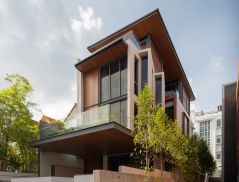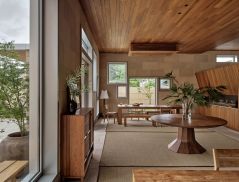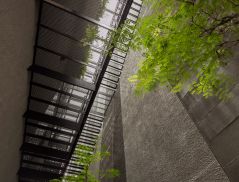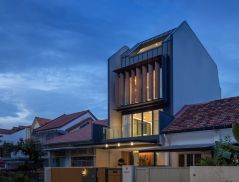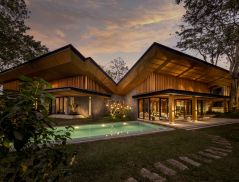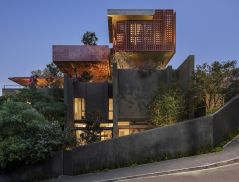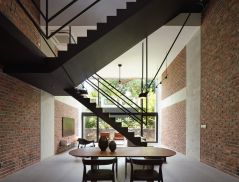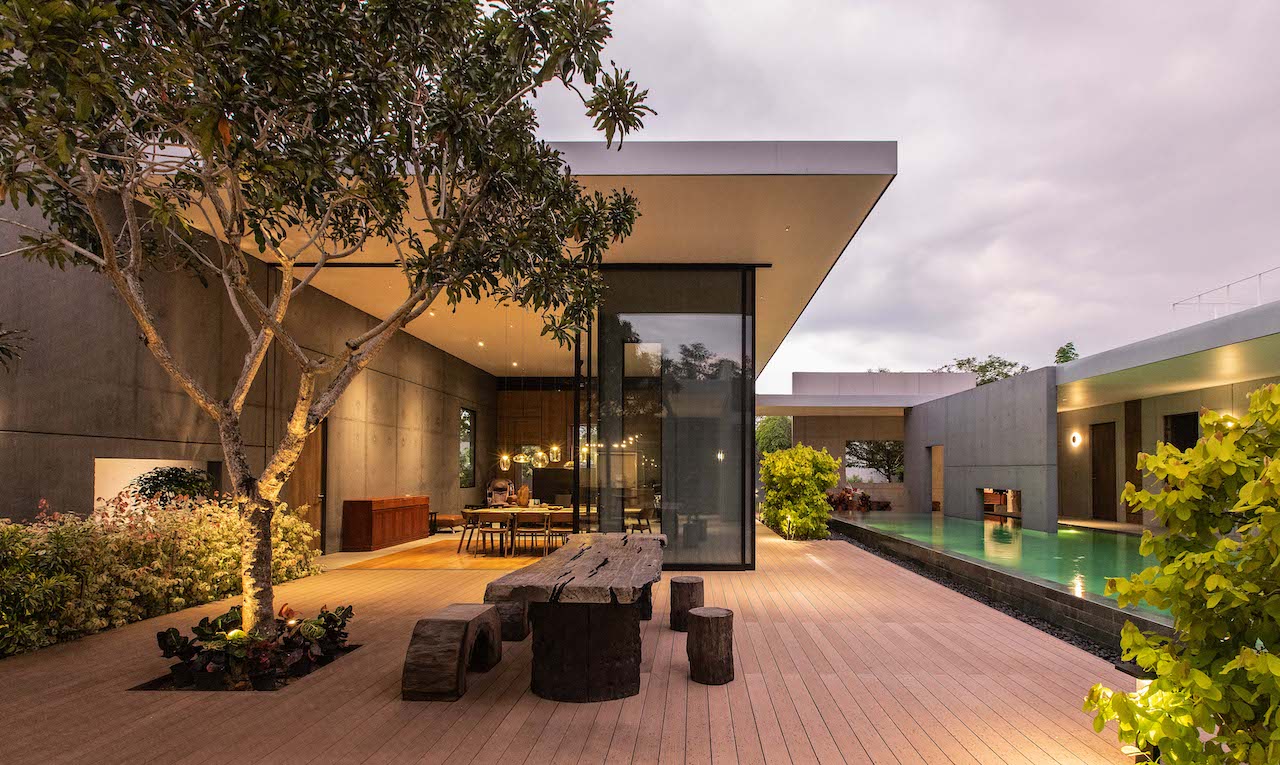
Often conjured as an expansive palatial ground of medieval times, the walled garden exists today as part of neighbourhood home archetypes, civic spaces and the gated hideaways of society’s one percent. One recent interpretation, ensconced in a far-flung corner of Malaysia’s Klang Valley suburbia, finds its roots in both Asian and Western sensibilities to manifest a symbiosis of architecture and nature.
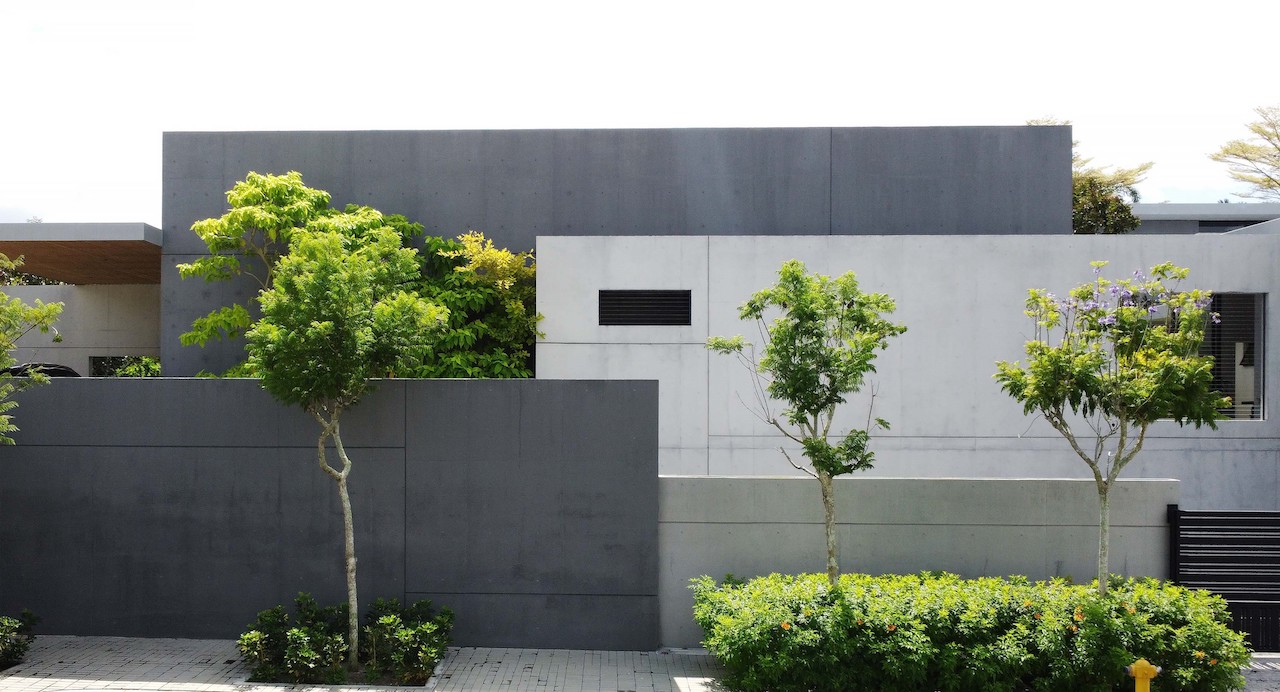
The Classical Garden
Borderless House is the brainchild of celebrated Malaysian practice Formzero, in collaboration with MOA Architects and Caleb Ong Design. The moniker is an oxymoron – there are 60 sheer concrete walls in the entire scheme – that reflects the architects’ poetic approach, as elaborated by Lee Cherng Yih of Formzero.
“We used classical Chinese garden design principles to define privacy and space for the owners and their family, and to simultaneously create interconnectivity with each other and nature,” he says. “In a Chinese garden, you don’t see the whole picture, unlike a typical bungalow where everything is immediately on display. There is an element of hide and seek, of screening certain areas, or highlighting certain elements, that creates surprise and shapes one’s experience of the house.”
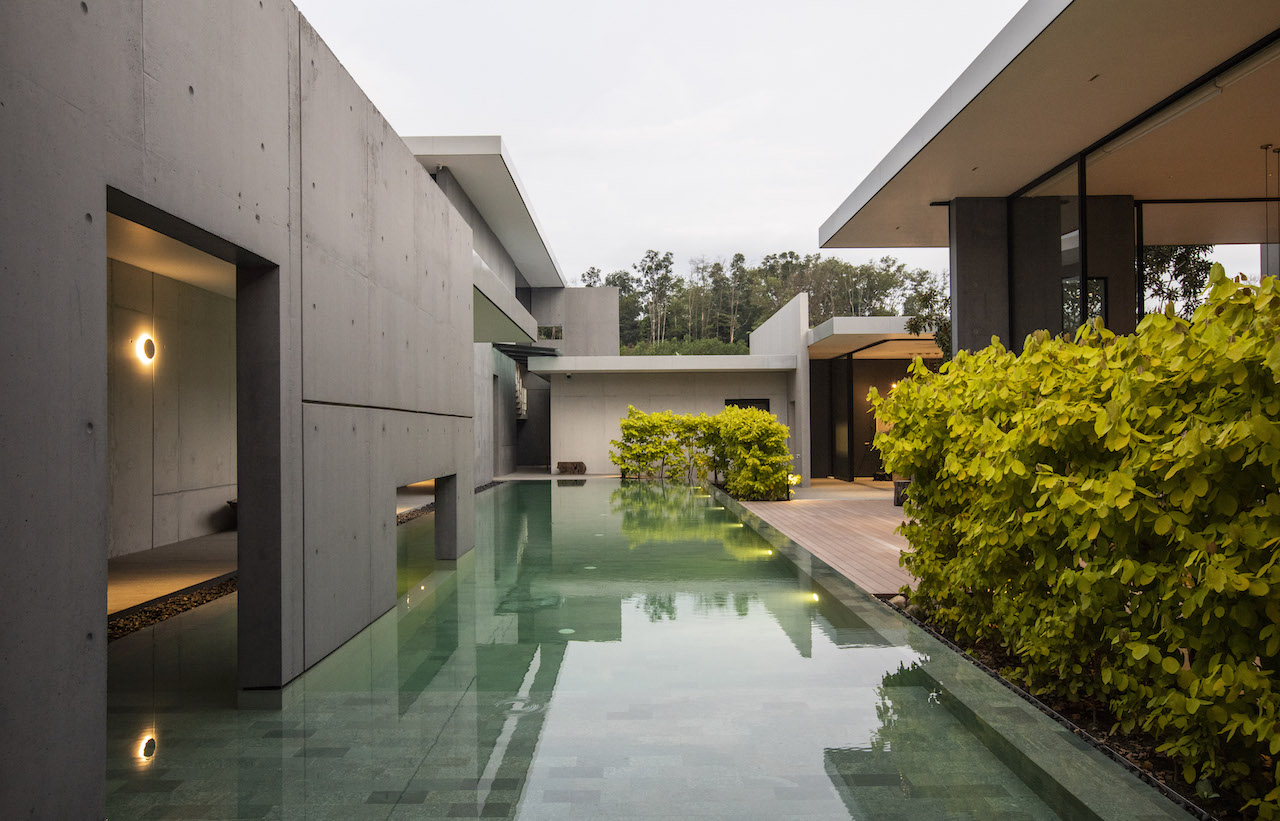 Composed around the central pool are the house’s pavilions of spaces formed interlocking planes of different heights and sizes.
Composed around the central pool are the house’s pavilions of spaces formed interlocking planes of different heights and sizes.
The approach is skilfully executed – the self-discovery visceral, and sensorially enhanced through the house’s predominantly single-storey design. Overlapping walls are arrayed across 405 sqm of built-up area, cast with rectangular openings at specific locations and heights to reveal the belt of garden thread through the house. The layering schema also has an external affectation. The architect shares, “Instead of having a huge boundary wall, we decided to break down the perimeter into layers that brings the garden into the public domain, and gives passersby a glimpse of the greenery within.”
Water, another key element of the traditional Chinese garden, is introduced via a pristine pool at the heart of the house. Framed by passageways, tall shrubs and a deck adorned by a blooming pong pong tree, the pool becomes an extension of space, inviting interaction and activities to occur in an outdoor setting.
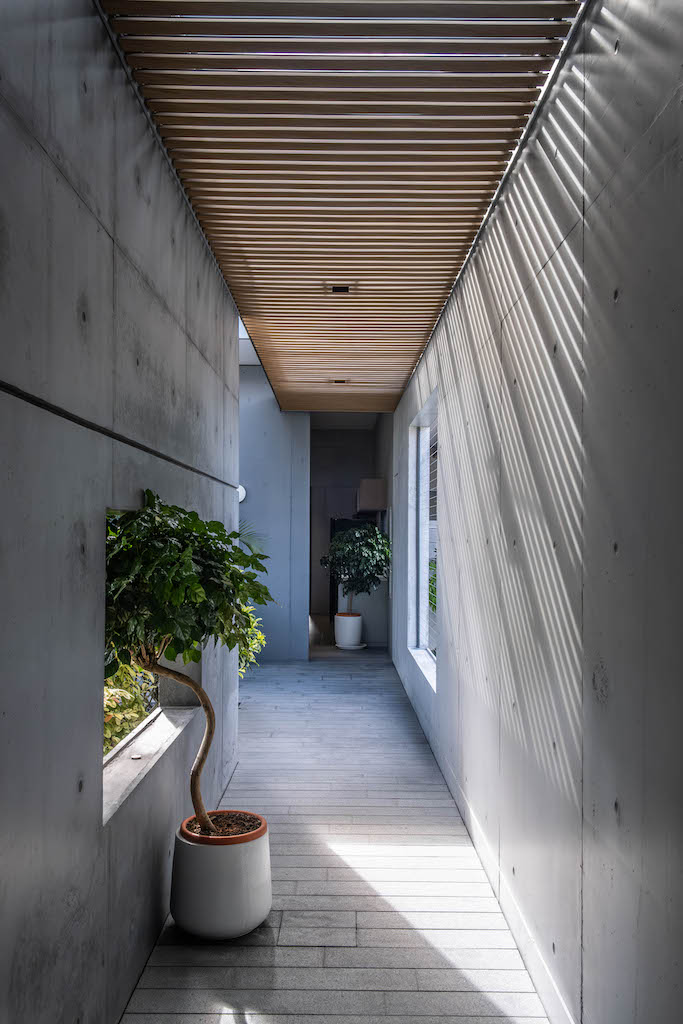

Barcelona pavilion(s)
Encircling the pool are the majority of the house’s ground-floor spaces and its single upstairs bedroom and lounge. A desegregated collective, their architectonics are inspired by the Barcelona Pavilion. Slender planes of cast-in-situ concrete walls rise to intersect floor-to-ceiling glass doors with trademark precision, flooring and ceiling materials similarly articulated in the spirit of van der Rohe’s masterful oeuvre.
Project co-designer Caleb Ong reveals the lengths the team – not to mention, client – went to in aspiring for such a bar. “We had countless samples on this project, even of the actual concrete used. Mock-up RC walls were built on site so that we could further their study, to see what worked and what didn’t, and come up with the right solutions. The sliding (glass) doors are all customised and come without any door framing. Their details and mechanisms had to be developed so that they can retract and fully open spaces to the outdoors.”


The architects’ focus on high indoor-outdoor permeability has brought about almost dogmatic scrutiny to the house’s seamlessness. Case in point: beyond hard boundaries of doors and openings, all floor finishes and decks are designed to be completely flush side by side, evenly laid (and drained for good measure) for congruity and unhindered transition. Formwork lines, grooves and other joints are duly aligned – and some purposely off-centred – for continuity of visual expanse. Tie holes are meticulously set to grid, and according to Caleb, sealed with a unique rolling method devised during construction.
The play of heights, discreet shifts in plan, interior work and garden planting, seem to be the only exceptions to this systemic precision, likewise the coloured pigments used in the concrete walls. As a monochromatic trio, the pigments give exposed concrete surfaces an added depth through heterogeneity, a satisfying departure from the standard off-form finish of regional vernacularism.
Generational Quality of Living
Tropical design is as innate to the house as is its open concept. The living-dining pavilion, with its northeast-oriented glazing and southwest-facing walls, gains a pleasant morning light while managing to negate the heat and harshness of afternoon sun. Its lofty volume encourages just enough cross ventilation to effectively reduce air-conditioning use that, in tandem with large roof overhangs, provides a comfortable and relaxing environment ideal for family living and recreation.
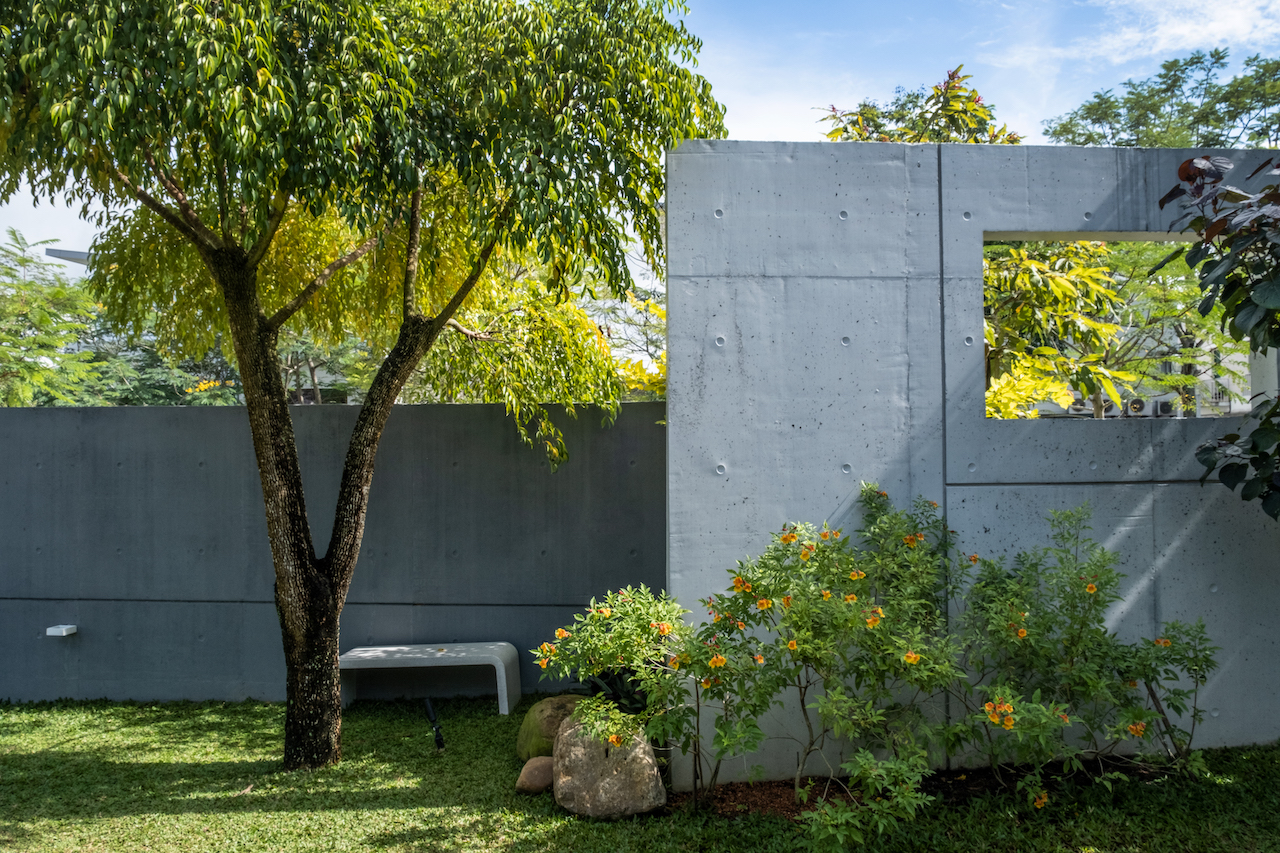
In producing such a house, where 77% of the site is surrendered to outdoor space, pool and garden, it is inevitable that existing precepts of urban living will be challenged. An introspective life-centric worldview is perhaps more advantageous in a climate of finite resources, compared to consumerist desires and tendencies to construct more. Borderless House’s dual act of having less building and having more nature isn’t a zero-sum equation. Rather, it is an investment in improving generational quality of living which can impact community and surroundings in profound and long-lasting ways.
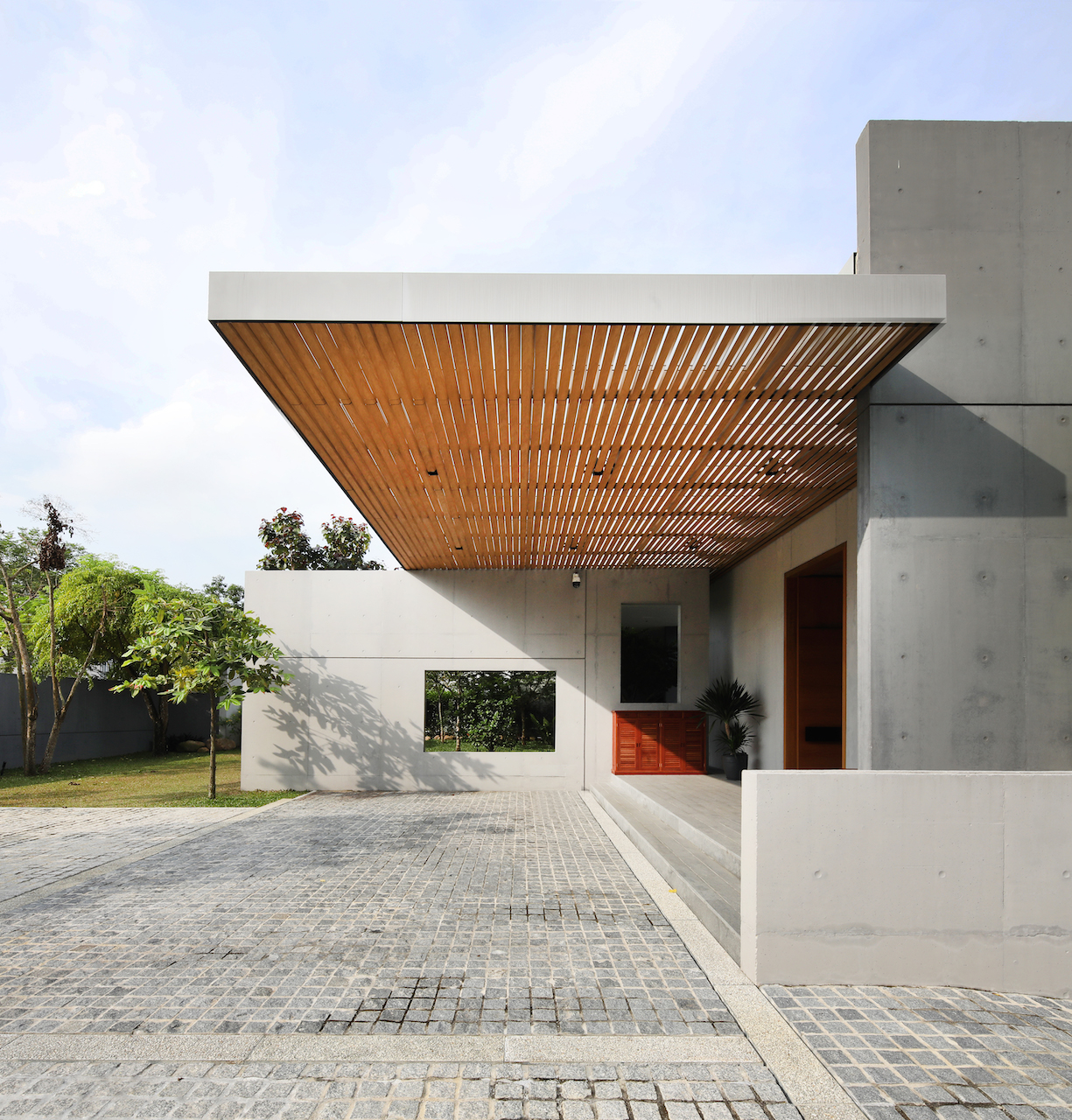 A gravity-defying canopy of glass, steel and louvres demarcates the main entrance, the warm-toned installation in purposeful contrast against the muted greys of granite and tri-coloured concrete.
A gravity-defying canopy of glass, steel and louvres demarcates the main entrance, the warm-toned installation in purposeful contrast against the muted greys of granite and tri-coloured concrete.


 Share
Share
